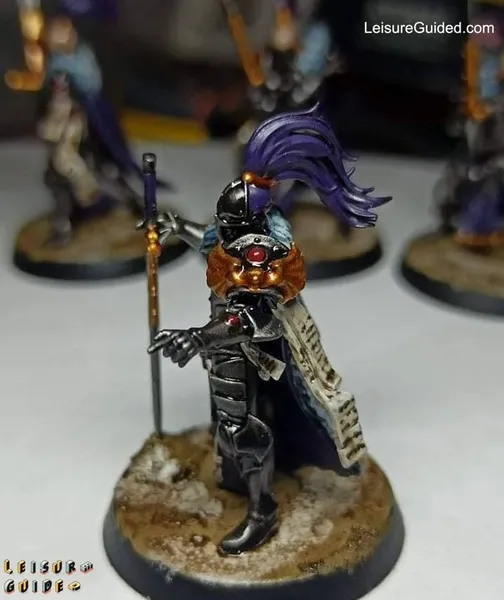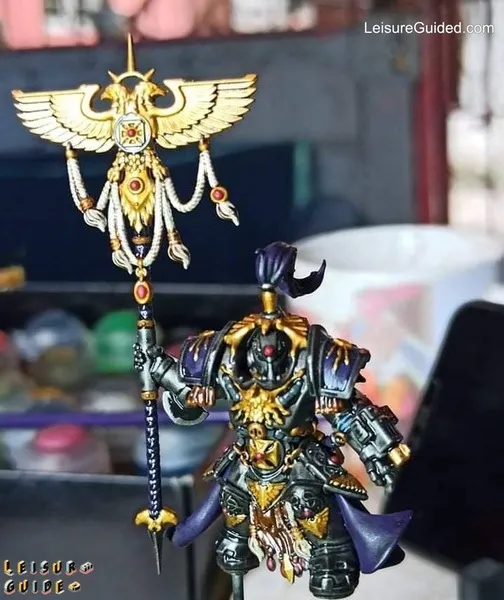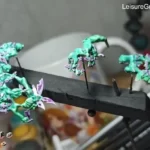All The Reasons Why you need to varnish Your miniatures

Painting miniatures means getting all of its surface soaked in paint.
However, the pointy parts to the sharp edges are a bit delicate. If you do tabletop gaming, there will be a considerable chance of paint chipping. Plus, the paint can wear out pretty fast.
Experienced painters recommend using varnish after the paint job to ensure it lasts long and does not chip. But, is varnishing miniatures really necessary?
Should you varnish Your Mini over any paint?
It depends.
An enamel-based varnish over acrylics and lacquer won’t cause any harm to the acrylic paint, but acrylic over enamel is a dangerous combination.
Enamel-based varnishes have alcohol solvents in them. So, when used on water-based acrylics, they melt the paint, and if the model is designed made of plastic, it may even damage the material.
However, be sure that before using enamel-based varnish on acrylic paints it cures fully. If you varnish it before it cures, you can get cracked paint.
On the other hand, a water-based varnish over enamel won’t stick well due to the alcohol texture of the enamel paint.
Varnishing plastic miniatures will seal off the paint
Varnishing plastic miniatures prevents flaking on exposed edges of small figures like the shoulders and bayonets.
While metal figure benefits more from applying a varnish, the varnish will also help seal off the paint on plastic minis, especially if they are played with regularly.
Varnish will protect your paint from grease and fingerprints
Besides sealing off the paint, another benefit of using varnish is to protect the painted surface from handling.
Sweat and oil are constant features of the human body, especially after working for long hours. When handled, oil on the finger will rub away paint while leaving behind fingerprints that may also ruin its smooth surface.
Unless you will only handle minis by touching the bases, it is best to varnish your figures after painting them.
Varnish will give your mini a uniform look
Applying a varnish will also unify the whole mini, eliminating spots of different finishes from your painting.
If you’ve painted more than one wargaming or tabletop figure, you know that in some cases where you thin paints, especially cream and white paints, the finish may look chalky, and even a good primer won’t be enough to remove this chalky look.
A varnish will give all your paints the same finish and help blend the paint to make it look smoother.
varnish your miniatures especially if you paint them with an airbrush
If you airbrush your miniature, it is most necessary to varnish since the coats are thin.
Airbrushed paints are often applied in thin layers. This simply means that when handled roughly, the base coats, shades, first set of highlights, or even the last highlighted paint can chip easily due to the too-thin coats.
Varnishing the thin layers of paint ensures they don’t chip easily when they fall, fade or scratch from the small force.


Varnish will help the paint job last longer
If you also play with your miniatures or plan to use them solely as gaming pieces, you should varnish them because you never know when they may fall. Wargaming miniatures are more prone to drops. When they fall, it leaves bumps that cause the paint to chip and scratch.
Varnishing adds a layer of protection that will extend the longevity of your paint job, and the color will not fade quickly.
Models that are often used as gaming pieces tend to get beat up through regular handling. Adding a varnish after painting the miniature will feel like gluing two broken surfaces together, so it won’t require extensive repair or spoil easily.
Varnish is essentially a thin layer of glue that coats the outside of your minis, protects the paint job, and strengthens the figure, making it more resistant to chipping when they fall.
varnished miniatures Are Easier To Dust Off
Some people also paint models with the aim of leaving them on the shelf, but it might be smart to varnish them.
Varnish helps against dust sticking to the model.
Placing a miniature on display for a long time increases the chances of the model collecting dust. Without the varnish, the paint will easily fade, and the color becomes dull.
Even if the figure collects dust, with a varnish, it will be easy to clean off the dust with a clean rag and water.
Keep in mind: varnishing the miniature can make the color look a bit different
While varnishing miniatures has its advantages, one of its drawbacks is that the varnish may reduce or alter the quality of the paint scheme.
Matte varnish will dull the colors. For instance, a shiny red will look more like a burnt orange. Satin and gloss can make the model look more wet than shiny. The effect you get is an unnatural finish.
If you only display your miniatures, it is not necessary to varnish them
It is not necessary to varnish your miniatures if you are planning to display them.
Miniatures displayed are less likely to be held, so they won’t collect grease or leave fingerprints. Plus, they are less likely to fall or collect dust, especially as most painters store them in showroom glass.
The bottom line is that miniatures painted for display are hardly ever influenced by nature. From dust to handling, they retain their pristine features. Hence, they won’t need varnish.
If you intend to repaint your miniature, don’t varnish it
If you painted the miniature just for practice and you intend to repaint it in the future, don’t varnish.
Varnishing a figure you intend to repaint may cause damage to the material, especially if it is plastic. Stripping paint sometimes leaves scratch marks if not done right.
Instead, prime before painting so the paint sticks well to the miniature. Also, leave the paint to cure fully. This way, you know how well the paint job turns out. Then, strip the paint before repainting.
Your next thought: matte or gloss varnish?
A coat of varnish, whether it is a spray can varnish, brush-on varnish, or airbrush varnish, won’t hurt your miniature’s surface as long as you don’t go extreme with it. I have used matte and gloss varnish, and they give different effects.
Gloss varnish enhances miniatures so the figures look shiny and brightly colored, while matte varnish gives a more drably scheme.
You don’t want glossy shine except for very limited cases. For instance, when painting figures like Darth Vader or even a Stormtrooper, a glossy coat will give a shiny finish. But, if you are concerned about the varnish affecting the vibrancy or hue of your miniature, apply a thin coat of matte.
*Read Our Full Breakdown of Matte vs. satin vs. gloss varnish miniatures*





